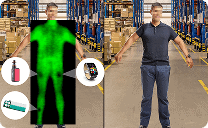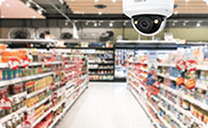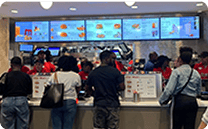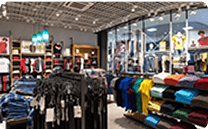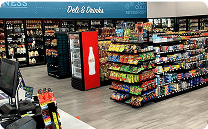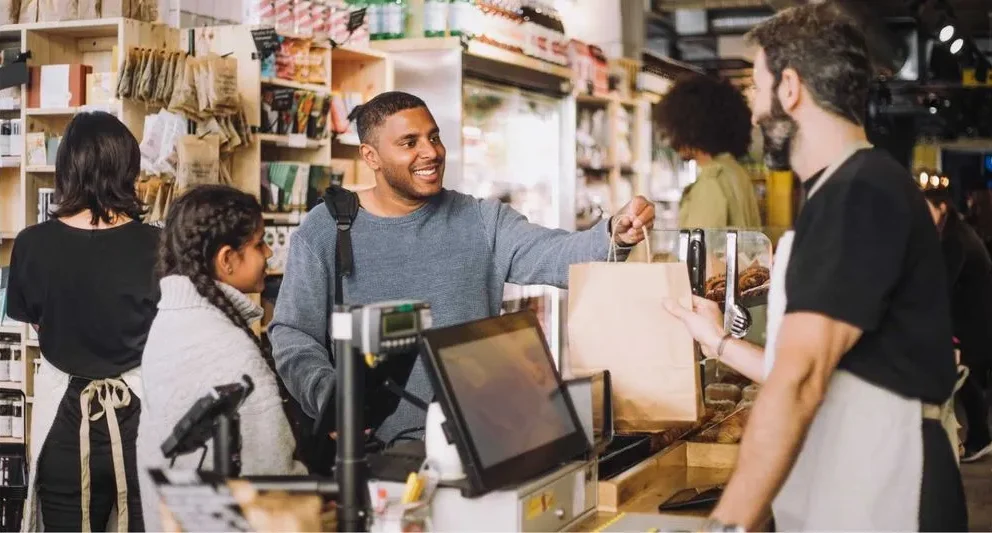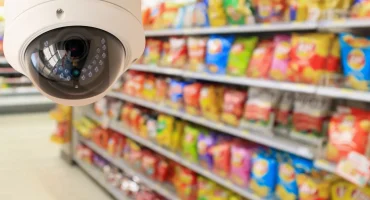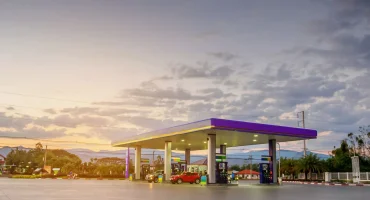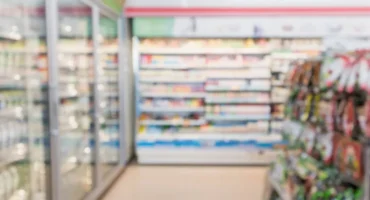In This article
In many ways, the convenience stores of today are quite similar to the C-stores of 20 years ago. Staple brands like Coke and Pepsi still dominate store shelves, the point of sale is lined with candies and gum, and fresh food is on display all day long.
However, while many of the products have remained the same, innovative technologies are reshaping the convenience retail industry at a lightning-fast pace. From artificial intelligence tools to mobile ordering and curbside pickup apps, technology is involved in every customer touchpoint.
If you want your C-store to keep pace, it is vital that you embrace the latest convenience store technology. With that in mind, let’s take a closer look at the convenience store technology trends that have emerged in recent years.
Evolution of convenience store technology
Convenience store technology has allowed gas stations and c-stores to offer a wide array of new onsite services. Convenience stores have adopted robust retail technology that speeds up checkout processes and overcomes ongoing labor shortages that emerged during the global pandemic.
In the last year, C-stores have also been using technology to personalize the customer experience. To do this, they have been using mobile apps, rewards programs, and personalized product recommendations based on consumers’ previous purchases.
However, convenience store technology affects far more than the in-store experience. Many gas stations are using exterior solutions from companies. One such business, Gilbarco Veeder-Root, provides vapor recovery detection solutions, automatic tank gauges, and forecourt kiosks designed to help gas stations increase safety and maximize revenue.
New convenience store security trends have also emerged in the past few years. Specifically, businesses are investing in real-time monitoring technologies to mitigate security risks and guard against profit tanking.
Perhaps the most exciting convenience store technology trend is in-store and e-commerce shopping. Modern C-stores allow customers to purchase online via web browsers or mobile apps and then pick up goods in-store.
9 major convenience store trends to be ahead of
Now that you know how the industry has evolved throughout the last few years, it’s time to explore the biggest trends to keep an eye on — both within technology and the customer experience space. Surprise, these two often tie together!
Remember, the sooner you get ahead of these trends, the more you can benefit from them.
1. Emphasis on customer experience
This trend is arguably the cornerstone of every other trend in the C-store space.
Gone are the days where C-stores can lean back on convenience and excuse everything else. Even at a convenience store, customers are coming in and expecting a positive customer experience.
This is an especially large undertaking for C-stores, given the hours of operation. Almost no other businesses have to cope with guests coming in at 7AM, 7PM, or 2AM, all with likely different expectations of what they need and no closing time.
So how do operators rise to deliver an incredible guest experience during all hours of the day?
Let’s dive into the other trends, all which will unlock a better customer experience.
2. Embracing key technological innovations in convenience stores
When it comes to delivering a good customer experience, your technology is key.
Convenience store POS technology has been at the center of this industry’s evolution. Business owners are working to create a frictionless customer experience by using technologies such as:
- Mobile Apps: Incentivize repeat purchases by providing rewards and discount opportunities
- Self-Checkout Kiosks: Offset labor shortages and streamline purchases
- Contactless Payment Systems: Allow c-stores to provide better service and transactions
It’s important to note that over half of Americans use digital wallets and other contactless payment systems, making them especially relevant in the current landscape. If your technology can’t accept digital wallet payments, you’re missing a large demographic of purchasers.
C-store security technology has also leveled up in recent years. Today, convenience store and gas station owners are rolling out internet-connected cameras and real-time monitoring systems to promote safety and security at their places of business. These solutions provide a multitude of benefits, including instant notifications about breaches, crime deterrence, and employee monitoring capabilities.
3. Embracing Mobile Commerce
Mobile commerce (M-commerce) is the process of buying and selling products via smartphones and other internet-connected handheld devices. The m-commerce industry exploded last year, reaching $431 billion in revenue. This should come as no surprise, as mobile commerce technology offers customers a quick and convenient way to make purchases.
The m-commerce revolution has had a huge impact on c-stores. Leading c-store chains are supporting mobile commerce through:
- Mobile apps
- Loyalty programs
- Personalized offers
- Contactless payments
Embracing these m-commerce strategies and technologies keeps you connected with your customers and encourages repeat purchases. Loyalty programs allow you to gamify the purchasing experience by awarding consumers points or tokens for each transaction. Mobile apps also enable you to gather vital information about your target audience. You can learn about what they buy, when they visit your store, and how much they spend per transaction.
4. Changing fuel needs
Less than five years ago, you could probably count on one hand the number of people you knew with electric cars.
Now? That’s probably changing — and it’s not just around your community.
U.S. sales of hybrid, plug-in hybrid, and battery-electric vehicles reached 9% of new EV purchases in 2023. Purchases in September 2023 were up 67% YoY.
This means that C-stores with a gas station need to be ahead of the changing fuel needs that consumers have. More electric car drivers are changing their typical station to those that offer electric charging or — bonus! — superchargers that get them back on the road faster.
This means investing in technology that grows your charging capabilities is something C-store and gas station operators need to invest in.
5. IoT and smart store solutions
The Internet of Things (IoT) refers to the network of physical objects that are connected to the internet. These objects are equipped with software, sensors, or other technologies to gather data, exchange information with other IoT devices, and provide insights into our world.
In the convenience store setting, IoT technologies allow you to monitor many aspects of your business. IoT-enabled solutions can be used to:
- Track inventory levels
- Monitor the temperature within your store
- Track the energy efficiency of your equipment
Integrating IoT solutions into your store will help you reduce operating costs and identify potential malfunctions with your equipment. You can also use these insights to create more comfortable conditions for your staff and customers.
From an inventory management perspective, IoT sensors help prevent stockouts, enabling you to maintain adequate stock levels without overordering. Using IoT sensors for just-in-time ordering improves cash flow and can also assist with tracking and predicting demand.
6. Data-driven insights for better decision making
The convenience store technology revolution has led to the widespread adoption of data analytics software. Tech-savvy convenience store owners are using these technologies to better understand the customer experience and track business performance. Data analytics tools also provide insights into inventory, cash flow, and other key metrics.
By adopting data analytics technology, you can improve business performance and inform your decision-making processes. For instance, you could determine which snack items have performed the best over the past three months. You could then engage in demand forecasting and maintain an inventory that aligns with customer preferences.
Data analytics allows you to step into the minds of your customers. And once you understand where they’re coming from, you can tailor your in-store offerings to match their preferences. As a result, you can see an increase in sales and customer satisfaction.
7. Enhanced customer experience through personalization
While modern c-stores have become a hub of technology, customer service remains at the center of the convenience store business model. That is why many convenience store technology trends are centered around delivering personalized customer experiences.
Personalizing the customer experience involves presenting consumers with tailored recommendations and promotions. Technologies like mobile apps facilitate personalization by allowing you to track customer purchasing history. You can then use this information to provide curated product recommendations or alert customers to new promotions and sales.
For instance, let’s say that one of your long-time customers stops in every Monday to purchase a large cup of coffee and a candy bar. They always use your branded mobile app when making purchases to earn reward points for each transaction.
The next time you run a sale on coffee and/or the customer’s favorite candy bar, you can send a notification to them via the app. In response, they may stop in multiple times during the week of the sale and make additional purchases.
8. Sustainability and other green technology
According to a study conducted by NielsenIQ, 78% of U.S. consumers care about sustainability. Keeping up with the latest sustainability and green technology trends will help you appeal to modern consumers. Adopting green technologies and sustainable business practices will also reduce your carbon footprint.
Your business can go green in several ways. One easy method for reducing your energy consumption is implementing energy-efficient lighting. You can also install motion-sensor light switches in bathrooms, stock rooms, and other areas that may go unoccupied for long periods.
Another great way to make your business greener involves replacing traditional plastics with eco-friendly packaging. This trend began to gain traction in grocery stores several years ago. Many grocers encourage the use of reusable bags and purchase inventory packaged in biodegradable plastics.
While the convenience store industry has a long way to go to catch up, sustainable packaging is becoming far more common. If you want to get in on this trend, find out whether any of your key suppliers offer sustainably packaged products. You could also give customers the option to use paper bags or forego bags altogether to reduce plastic usage.
9. AI
Several exciting convenience store technology trends are poised to shape the future of c-stores. At the top of the list is artificial intelligence.
AI can be integrated into a wide range of technologies like inventory management tools, mobile apps, and analytics tools. With AI, these tools will be able to process even more business data and provide you with up-to-the-minute insights about your c-store.
Another exciting technology is cashier-less checkout solutions like Amazon Go. With Amazon Go, customers can use their Amazon mobile app or a credit card to open an entry gate. Then, they can grab what they need and just walk out once they are finished. As they pass through the exit gate, they will automatically be charged for the items they took.
Embracing trends with convenience store technology
Embracing the latest convenience store technology will help your business maintain its competitive edge and allow you to better serve your consumers. First and foremost, you should consider adopting robust convenience store POS technology like mobile apps, contactless payment platforms, and e-commerce tools. Implementing these technologies will boost revenue and streamline the customer experience.
However, you should also be mindful of the most recent convenience store security trends, like the use of real-time monitoring tools and smart camera systems. If you would like to learn more about these trends and the role of security equipment in promoting the long-term growth of your business, book a demo with DTiQ. As a leader in loss prevention solutions, we can protect your bottom line through the strategic use of security cameras and software.
Get in touch with DTiQ
